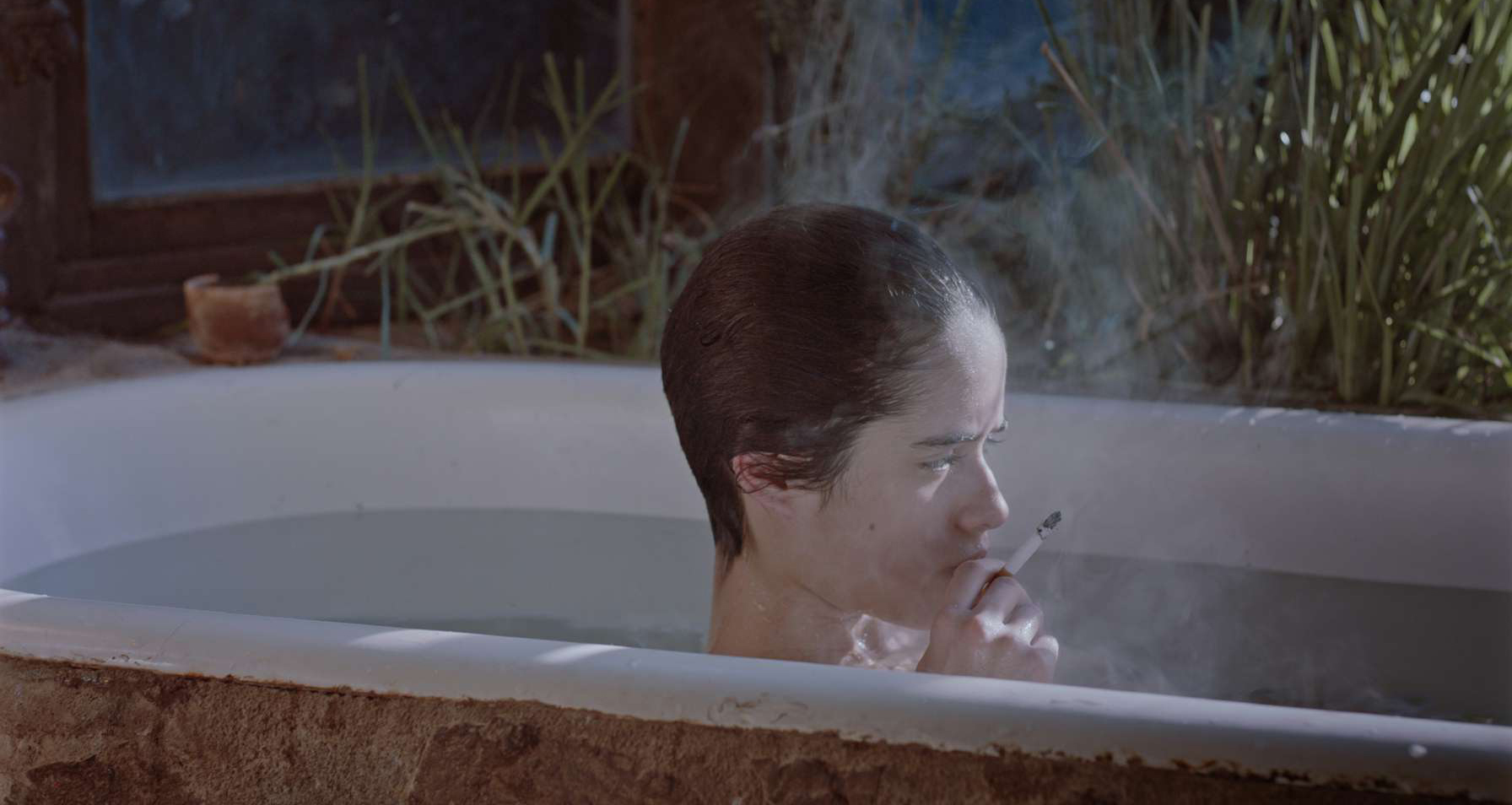Dominga Sotomayor on ‘Too Late to Die Young,’ Growing Up Fast in 1990 Chile
By John Hopewell
LOS ANGELES (Variety.com) – LOCARNO, Switzerland — Few Latin American women directors have awoken such expectation as Chile’s Dominga Sotomayor with her debut 2012 “Thursday Through Sunday,” a Rotterdam Festival winner. World premiering at the Locarno Festival on Thursday, “Too Late To Die Young” reprises some of the first feature’s themes and tone: Heartbreak at unrequited love, prescient young protagonists who sense the emotional complexities of their parents’ world. Set in the lap of the Andres, at an isolated ramshackle rural community in 1990 Chile, just as democracy is beginning to return to the country. “Too Late” is however shot on a far larger canvas, an ensemble drama which gradually focuses on 16-year-old Sofia, infatuated by a biker neighbor, distraught at the at community celebrations which confirm her mother’s abandonment of her.
Caught just after Stray Dogs announced it had acquired world sales rights to the film, a week before Locarno, Sotomayor talked about its inspiration, the impact of her singular childhood, her experimentation with camera set up which is almost pictorial in style with action occupying much of the mid and background.
What did you want to portray in “Too Late to Die Young”?
“Too Late to Die Young” is a film about growing up in a period of great changes, related to the nostalgia for and demythifying of a period, a coming of age story, both for the characters and Chilean society at large which was going through a process of pain after dictatorship.
I wanted to explore the complex relationships between generations and classes: Capture the sageness of children, the clumsiness of adults, that strange melancholy we have growing up. With this picture, I’m exploring a free and open form, close to the very nature of this community near to the mountains, far from limits and definitions.
Although fiction, I also see the film as a portrait of and homage to your childhood in the Ecological Community of Peñalolén. Could you comment?
On the one hand, the start of the film has to do with my life in that community, everything emerges from there; but on the other it’s the construction of a very different world, not so realistic, that I find strange and attractive.
I have a very bad memory and there are things that make me want to remember those first years in that place. It was a very special thing to live there. My parents were younger than I am now; risky with an illusion of living a different way, to put something new in the middle of nature. I think they succeeded. We were freer. We spent all day up in the trees and away from malls or television, always with the same neighbors.
The title of the film makes reference to the impact of this life, I think…
We lived with a precariousness. We all worried about having enough water, having candles, that cows didn’t come in at night. It was a simple life. There were no clear limits between the generations, no bars between the houses. At the same time the children were exposed to the problems of very young adults. We realized that our parents were still learning, that they were often wrong and had a bad time.
We were lucky to live there but also had the difficulty of growing up fast, of losing certain illusions early. I was very influenced by the neighbors at that time. Some were artists and they valued my opinion when I was seven or eight years old. They taught me everything was questioned and nothing was taken for granted.
I arrived at 4 and left at 21. I returned at 24 and I left again at 27 to live in an apartment in the city. I had a hard time leaving, my mom still lives there as do many friends. I saw the transformation of that place. I know all the corners of memory, the stones. I can walk the main road that leads to my house with my eyes closed. I have a very special relationship with that space that has always been in an eternal process of construction and change.
The film is shot many times with depth of field and characters in medium shot. Was this on purpose or did it come naturally to capture the strong feeling of a community very much imbued with the surrounding nature?
I wanted to go through real and mental landscapes where the edges are not clear, human/nature, inside/outside, female/male, past/present. It’s all about blurred and permeable limits.
For me the most challenging part was to make a collective portrait. It was like capturing a mental state. To a certain extent speaking about any one of the people in particular would come to define the general state. Apart from one exception, the attention is placed on small groups. I filmed it like that because I wanted, through the eyes of young people, to access the world of the community. I wanted space and nature to be emotional characters as well.


